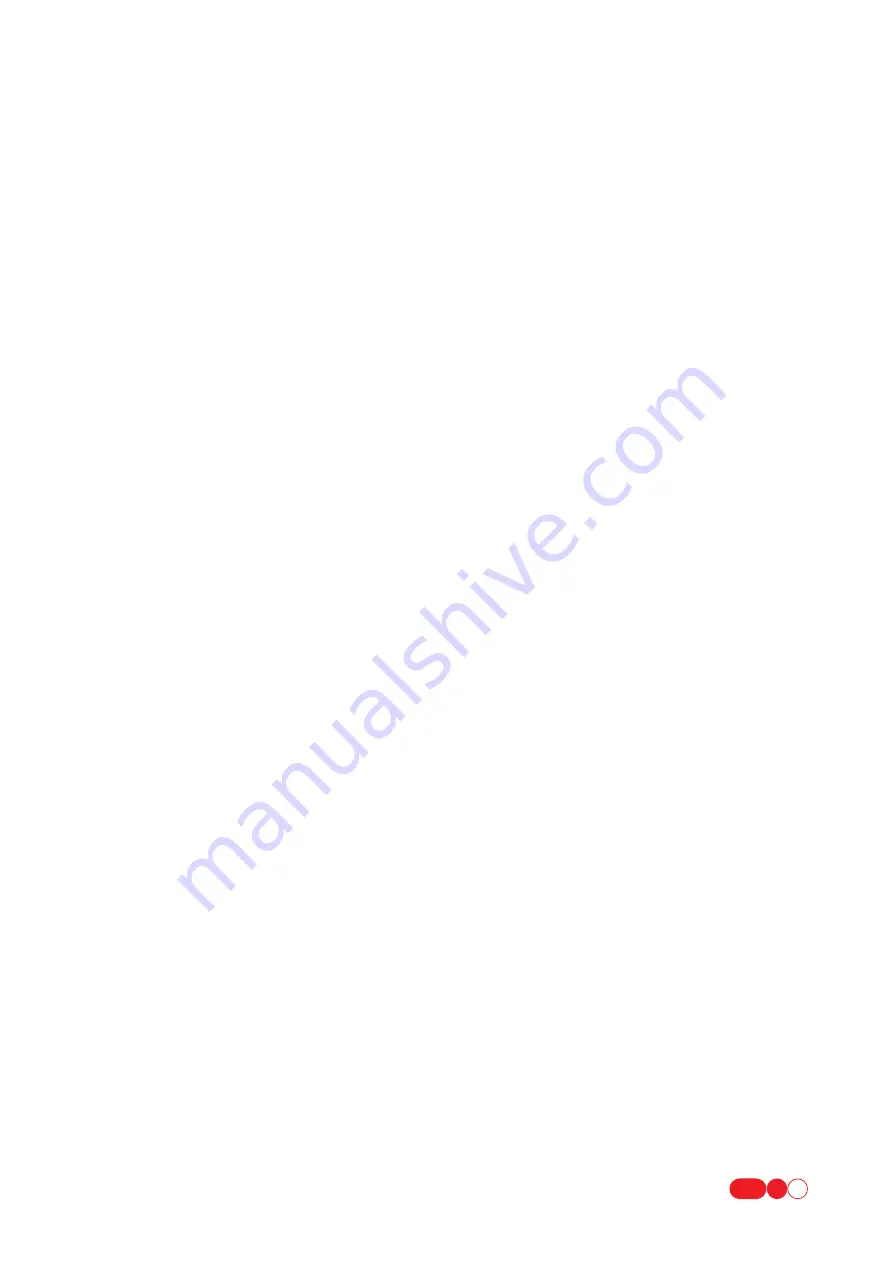
X-IP-SERIES USER MANUAL
17
6.6
CAMERA PROFILES
The RVX camera uses “Camera profiles” to store many imaging settings which can be applied on demand. This allows
the user to set and apply optimum configurations for a variety of operating conditions quickly and easily.
The camera can switch between any two profiles in “Day mode” and “Night mode” respectively, as well as being able to
override these chosen settings on command, either by manual override or linked to a preset position or shortcut
command.
For example, the camera may operate in a covert “infra-red” configuration when in “Night mode”, but the user may link
a particular preset position to a camera profile which enables white illuminators (where fitted) and simultaneously
enables colour video. This allows for optimum camera settings (and hence video quality) in each profile when
compared with simply switching white illuminators on or off without altering the imager settings to suit.
6.6.1 BASE
FEATURES
These features are applied globally to all camera profiles.
•
Invert Image - Flip the output video images vertically (Top to Bottom)
•
Mirror Image - Flip the output video images horizontally (Left to Right)
NOTE: These settings are usually only used in special circumstances. Before using these settings, ensure that the
installation setting Configure Camera > Basic Config > Orientation has been correctly specified.
6.6.1.1
CAMERA PROFILE
There are five different camera profiles available to the user. Each can be set to optimise the camera performance for a
particular situation. By default the profiles are named as follows:-
•
Daytime
•
Indoors
•
Low-Light
•
Zero-Light
•
User
The factory default settings for each profile are pre-set to give broadly the best performance in each situation, but each
can be renamed and modified to suit individual customer requirements.
For each profile, the following settings exist :-
•
Profile Name - The profile name can be changed to indicate intended use.
•
Profile Default - Reset the individual profile to factory default settings
•
Lamp Mode - Select OFF / IR / WHITE lamp operation (model dependant)
•
Auto Focus (Joystick) - Select if the camera should auto focus when operating under joystick control.
•
Auto Focus (Preset/Tour) - Select if the camera should auto focus after moving to a preset, or moving to each preset
stage of a tour. The camera will always move to the stored focus position as each stage, but then remian in manual
focus or return to automatic focussing.
•
Backlight Compensation - Improves visible detail by compensating for the dark exposure produced when viewing an
object against a brightly lit background field.
•
Digital Zoom - Allows the optical zoom lens to be supplemented by cropping the picture to produce apparent
additional zoom.
•
IR Cut Filter - In 'Visible Light' mode, the IR Cut filter prevents infra red light from reaching the lens, producing a full
colour, sharply focussed image. In 'IR Light' mode, the camera produces a monochrome image from all available
light, both visible and infra-red. This is the most sensitive mode for the camera, and is usually used with IR lamps.
•
IR Focus Correction - When operating in IR mode, if there is significant visible light present, the image produced may
appear out of focus. This is caused by the lens focussing IR light slightly differently to visible light. IR Focus
Correction sets the camera focussing to be correct for either Visible Light or for IR Light, according to user
preference.
•
Image Stabiliser - When ON, the camera applies full time digital processing to the output video, to remove shake
caused by small camera movements (e.g. in windy locations). This setting is disabled when the camera is moving,
and re-enabled when stopped.
•
Spot AE Metering - If ON, the image exposure is calculated from the centre of the picture only (to produce best detail
of the object of interest in a manually controlled camera). If OFF, the exposure calculation uses the entire image
(producing the best average image on an automatically touring camera).
•
AE Mode - In 'AUTO' mode, the camera exposure is calculated for the best overall compromise between the various
settings (Shutter Speed / Aperture / Gain). In 'Shutter Speed Priority' mode, the camera will hold on to the specified
shutter speed as long as possible by adjusting the Aperture and Gain settings first. This is useful where a high shutter
speed is desirable (fast moving targets) at the cost of a more grainy image in low light conditions.
•
Shutter – Select the preferred shutter speed when 'AE Mode' is set to 'Shutter Speed Priority'.






















